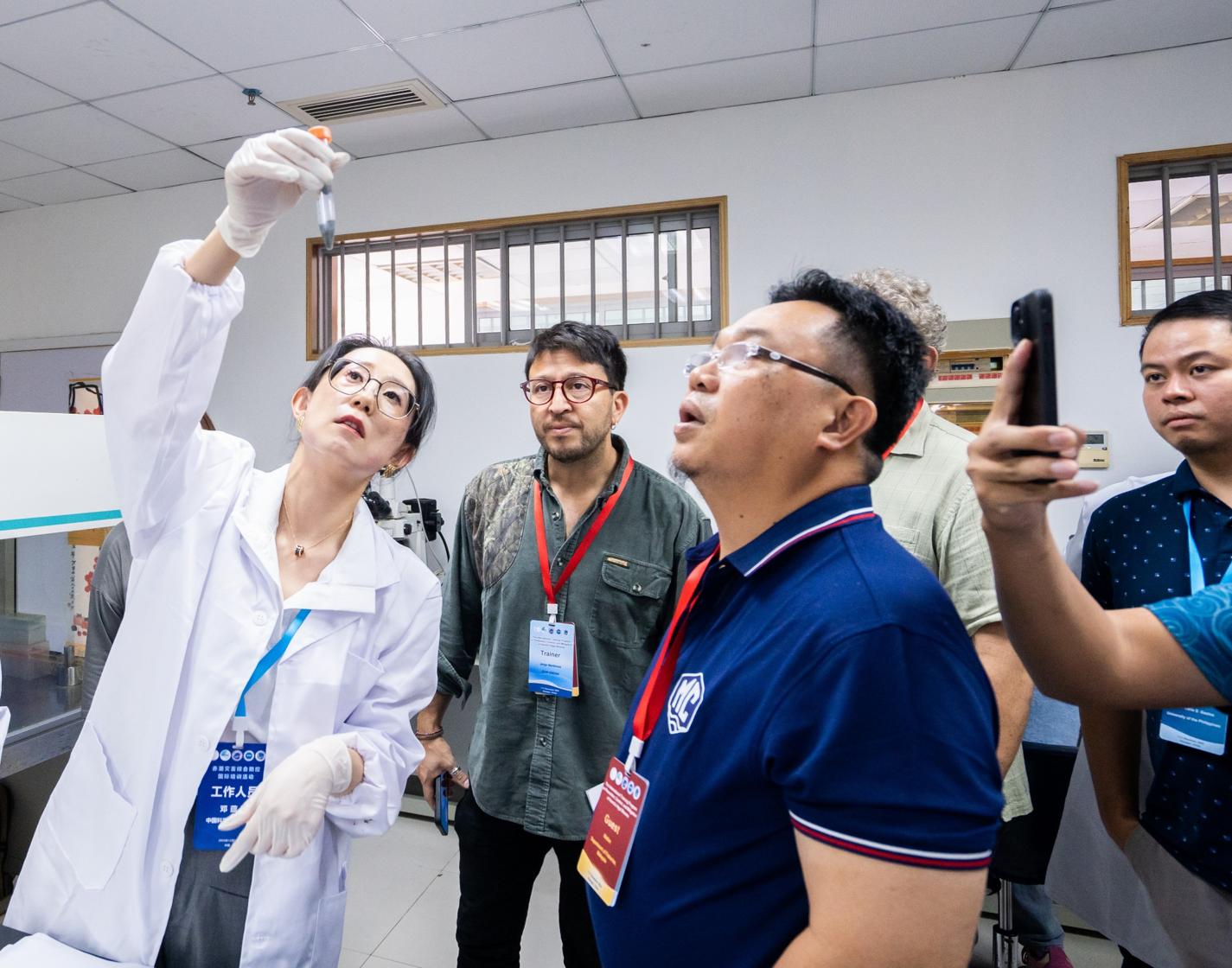(Text by DENG Yunyan, yunyandeng@qdio.ac.cn)

Yunyan was demonstrating the experiment to foreign researchers during The International Training Program on the Prevention, Control, and Mitigation of Harmful Algal Blooms. Credit: Institute of Oceanology, Chinese Academy of Sciences
While harmful algal blooms (HABs) have existed since ancient times as a natural phenomenon in marine ecosystems, their impacts on economies, public health, ecosystems, and aquaculture have intensified globally in recent decades.
Dinoflagellates play crucial roles in aquatic ecosystems, particularly as major contributors to HABs. They can enter a dormant stage, known as the resting cyst stage, which allows them to survive for extended periods—up to 150 years—in marine sediments. This dormancy is essential for their annual population dynamics, blooming cycles, and geographic expansion. Therefore, resting cysts bring to light the concealed and untold story which takes place underwater and the connections related to dinoflagellate HABs.
When I first observed dinoflagellate resting cysts under a light microscope, they looked so tiny yet incredibly fascinating. It's hard to imagine that these magic "seeds" underwater could later contribute to triggering such large-scale dinoflagellate blooms. From then on, I have been deeply attracted to these mysterious creatures and committed to diving deeper into this field.
Since 2013, I have worked in the Key Laboratory of Marine Ecology and Environmental Sciences of CAS as a research scientist. Our research group, led by Prof. TANG Ying Zhong, comprising young faculty members, postdoctoral researchers, and graduate students, has focused on resting cysts and their ecological relevance for potentially HABs-causing dinoflagellate species in China.
My research encompasses multiple aspects of dinoflagellate ecology, including dormancy regulation mechanisms, species diversity and distribution patterns of cysts, and their environmental implications for HAB dynamics.
In my recent study, we utilized the dinoflagellate-specific spliced leader sequence as a molecular "hook", integrated with single-molecule real-time sequencing and physiological profiling, to decipher the genetic and metabolic networks regulating cyst dormancy.
Surprisingly, sediment-buried cyst assemblages exhibited broad metabolic activity, revealing essential molecular machinery for dormancy maintenance. This work advances our mechanistic understanding of life cycle transitions in dinoflagellates, particularly the dormancy regulation pathways.
We attempt to establish an assessment framework for the risk of dinoflagellate HABs based on cyst-mapping of marine sediments in China. I look forward to contributing to the forthcoming blooms prediction through our efforts.
(Editor: ZHANG Yiyi)

